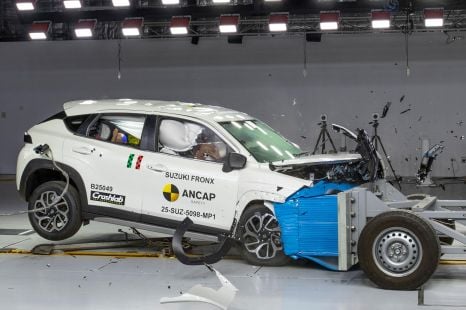

Damion Smy
Suzuki Fronx scores one-star ANCAP rating after seatbelt failure
7 Hours Ago
We take the luxe Land Rover Discovery D300 off the beaten path to see whether it can live up to its off-road heritage.
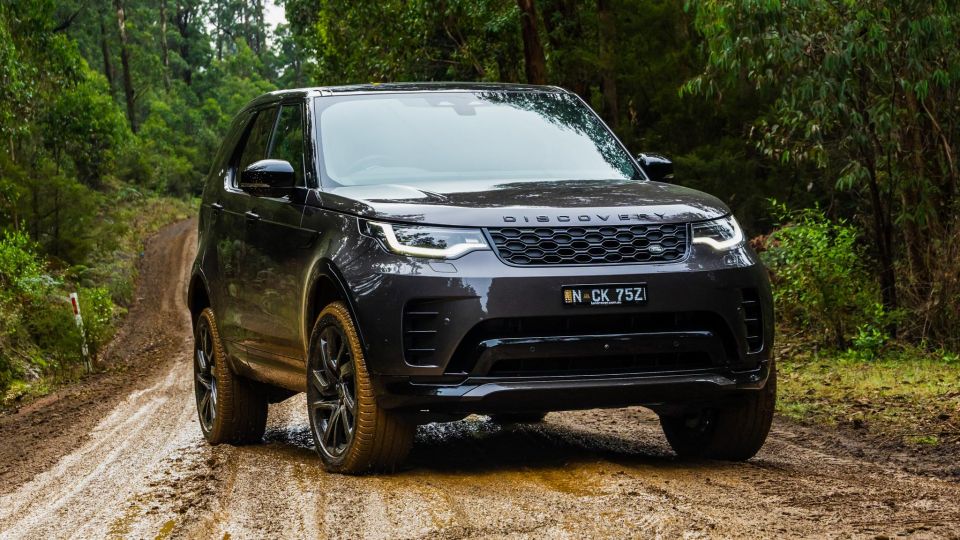
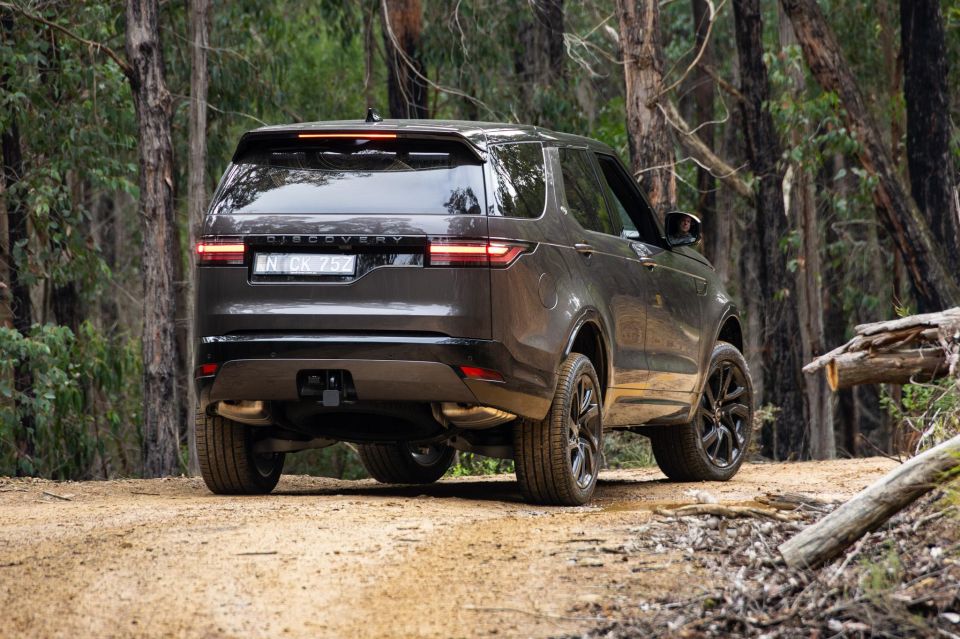

Quickly see how this car stacks up against its competition. Select any benchmark to see more details.
Where expert car reviews meet expert car buying – CarExpert gives you trusted advice, personalised service and real savings on your next new car.
Has the latest Land Rover Discovery lost touch with its heritage and become just another soft-roading SUV, or does it retain some of its ancestral off-road DNA?

Introduced in 2017, the affectionately named Disco 5 no longer carries a numerical suffix like its Discovery 3 and 4 predecessors.
On test here is the flagship Discovery D300 Dynamic HSE, which is technically a 2024 model as 2025 examples get a more powerful D350 turbo-diesel engine instead.
From the outset, I am not a fan of the bubbly, more rounded exterior design, but maybe that will grow on me. That said, it’s classy and refined in a typical English manner.
And the D300 inline-six diesel leaves no doubts in terms of performance when you put your foot down. However, there is a small delay in standing-start acceleration, which is typical of modern vehicles due to how manufacturers tune their ECUs these days.
WATCH: Paul’s video review of the 2022 Land Rover Discovery
When the powertrain eventually roars into life, this posh-looking wagon delivers enough power to thrill and makes me smile like only a boy racer would understand.
But the driver-assist warning systems are annoying the instant you begin to drive. It chimes, beeps, and honks incessantly. It is frustrating and annoying, but worst of all there are minimal dash or screen prompts to indicate their cause or cure.
Thankfully, you can create a custom profile with only the safety features you want remaining active. You can activate this with the press of a steering wheel button, but you do need to do it every time you drive the car.
I may not be a fan of the sloping and rounded dash, but the interior overall is pleasant and professional without being excessive.
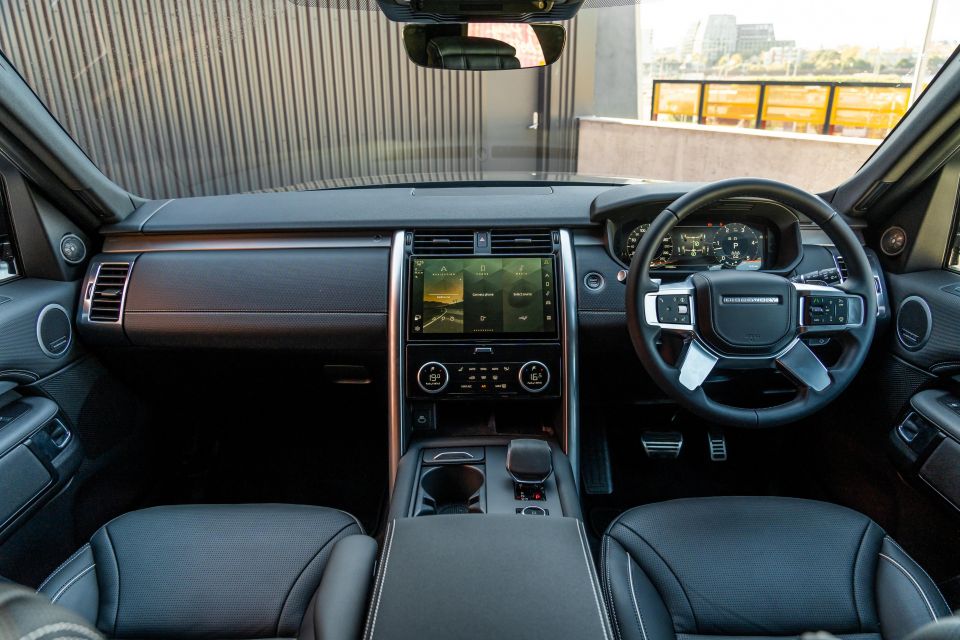
With black panelling broken up by silver accents, the interior is refined and cultured in a welcoming way, though the GWM Tank 500 has a similar interior feel for a considerably lower asking price.
On the freeway, the ride is smooth and comfortable, plus there is plenty of power underfoot. The lane-keep assist becomes more hands-on with the steering at speed.
Surprisingly, it acts as an actual aid and there’s less of the typical interference and overbearing intervention we’ve experienced in other vehicles.
Thanks to the lusty diesel engine, as you break away from suburban limits you are more focused on not speeding than you are on the drive itself. The speed builds ominously and sneaks up on you.
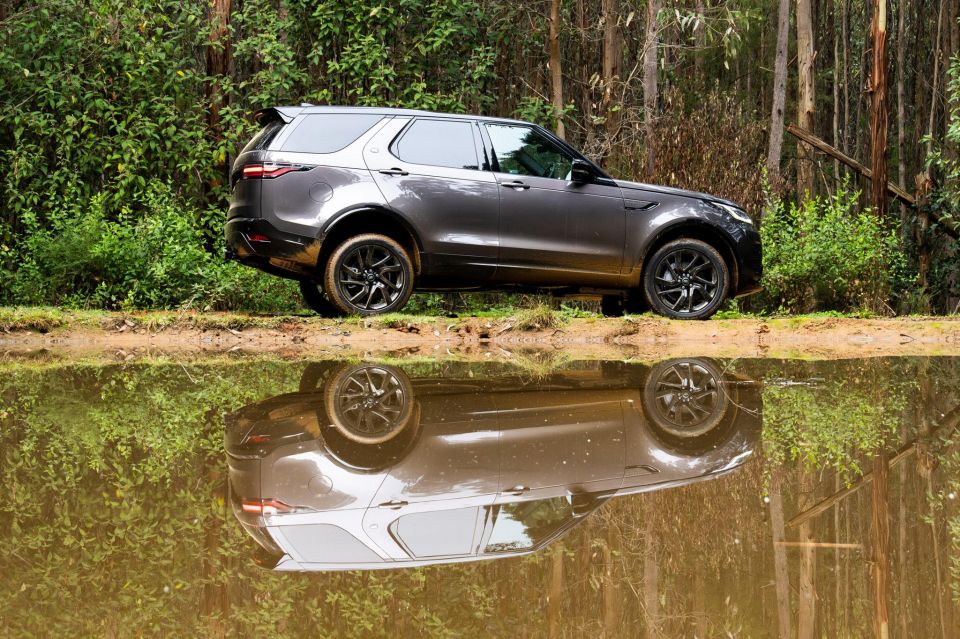
This is when the Intelligent Speed Limit Assist system comes in handy as it lets you know you’re going over the posted speed limit.
While the digital instrument cluster is clear, well-presented, and easy to read, the touchscreen infotainment system and climate control panel seems a bit lacklustre and dated for a brand-new vehicle that costs well over six figures.
Surprisingly, the brakes also feel a little underdone and, like the old RG Colorado, require a heavier foot in sudden braking manoeuvres. It’s not ideal and takes a little getting used to, but it is surprising considering the refinement and performance of almost every other aspect of the vehicle.
To sum up this introduction, the Discovery is comfortable, classy, and has oodles of power on the road, but how does it fare off-road? Read along to find out.
At speed on dirt, the Disco is a stack of fun.
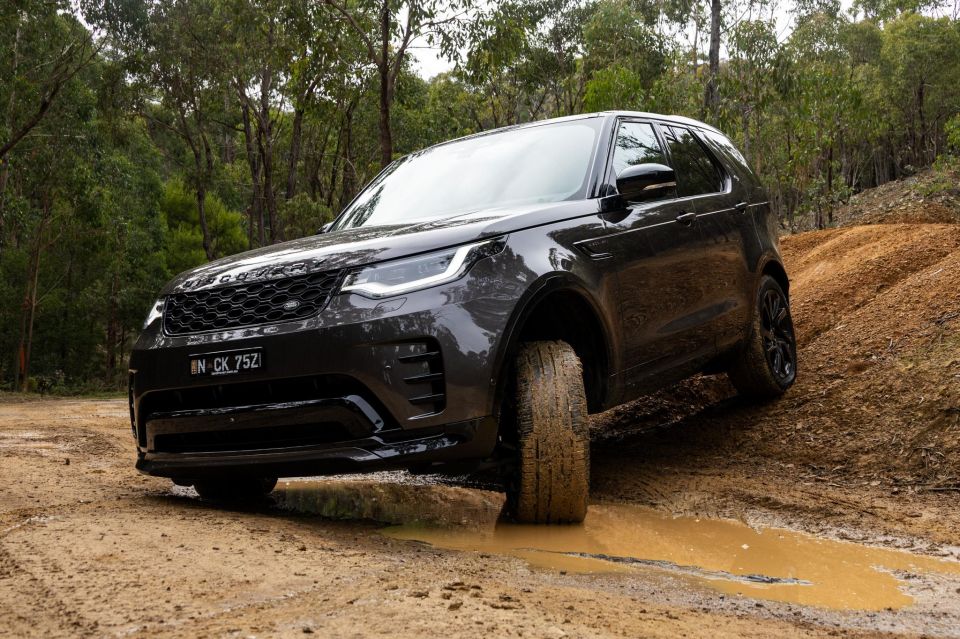
The all-wheel drive system, suspension, and vehicle dynamics all combine seamlessly, resulting in a confident, capable and comfortable grasp of the road, whatever the surface.
There is plenty of traction, heaps of control and no shortage of power. It’s impressive, and thankfully this continues when it comes to tougher obstacles where low-range is required.
There is plenty of power for climbing and descents are made easier by a surprising amount of engine braking at low speeds, which is certainly welcome especially considering it is an automatic. I’m starting to gain some respect and fondness for this Disco.
Switching to 4L is easier than expected and pressing on the drive mode dial (located on the centre console behind the gear selector) pops up the sunken control knob, allowing for quick and easy selection of the different terrain settings.
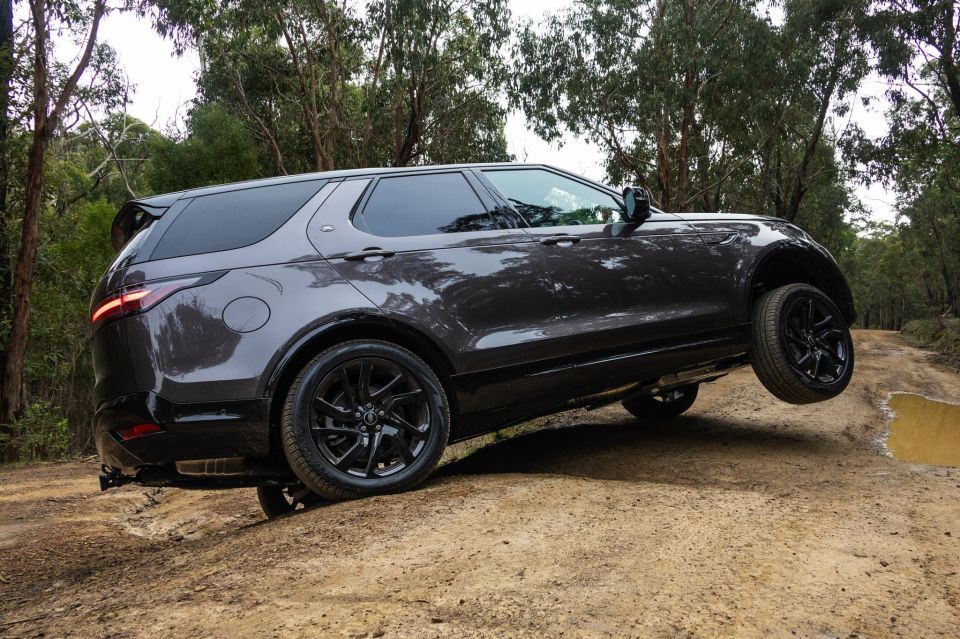
Again, it’s surprising and impressive just how low the 4L ratio actually is. In ‘Rock’ mode, the Disco traverses terrain like a beast. Power delivery is smooth, traction is amazing and, regardless of whether there’s a wheel in the air, the Disco crawled through everything we threw at it with ease.
This thing is seriously capable and fun to drive off-road. The limiting factors though are the approach and departure angles, especially the low-hanging front bumper.
Fortunately, this Disco comes with factory-fitted air suspension with an adjustable ride height function. It compensates for this somewhat, but removing the front bumper and fitting an aftermarket bullbar with improved clearance would make a world of change for hard-core off-road enthusiasts.
I was also impressed with the traction control system. Although the tracks we encountered were wet and slippery, at no point did the Disco break traction, nor was there any indication that the traction control was even working.
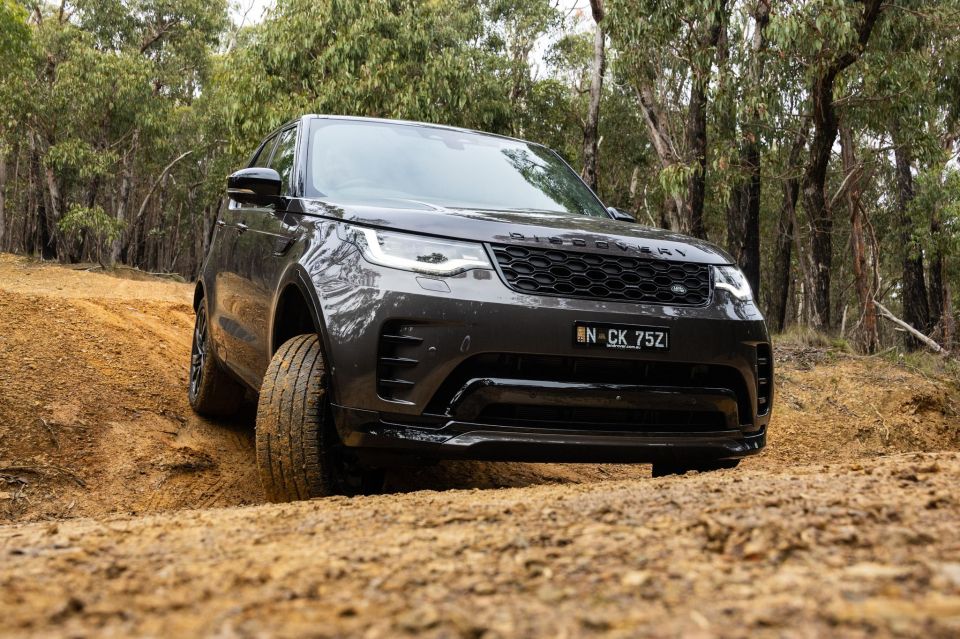
This shows that it’s brilliantly calibrated and functions perfectly, and it presents none of the creaks, groans, bangs or crunches that I have experienced in numerous other vehicles.
Taking into account the power, performance, capability, build quality and comfort on offer here, the Disco is in my humble opinion worth every cent of its not insubstantial asking price.
The exterior look may not be to everyone’s taste, but the growl and grunt of the diesel donk will appeal to any driving enthusiast.
Despite its more rounded look, the design really impressed and surprised me. It’s a winner in my book and well worth considering if you want something a little more refined than the typical Toyota or Nissan off-road SUVs.
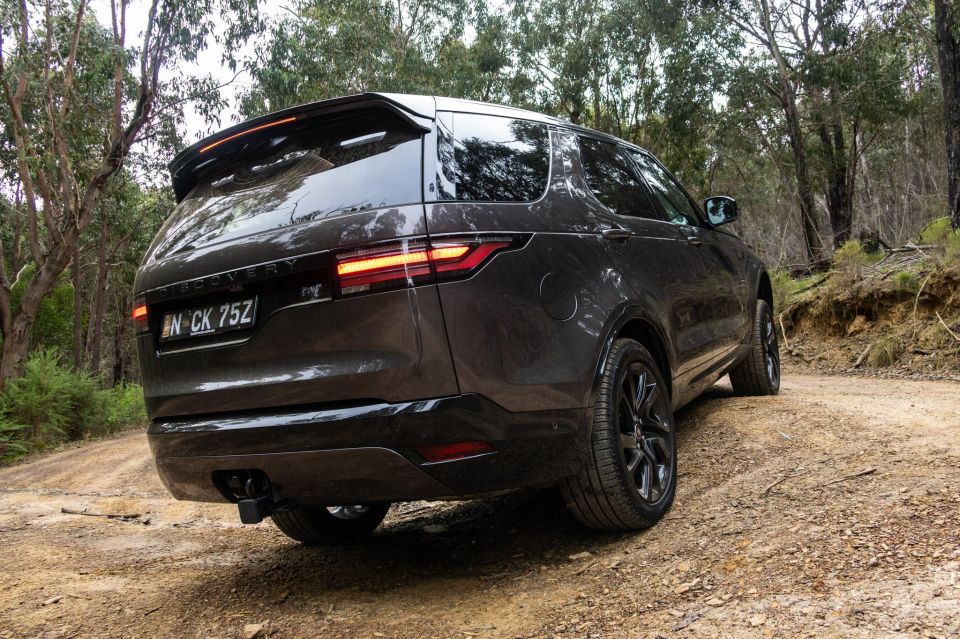
As a touring rig, a towing champ or a technical off-roader, the Disco has something to offer for everyone.
While I would be keen to see just how big a tyre I could fit for improved off-roading, I am a fan and would happily spend more time in one of these.
To see how the Discovery compares with its rivals, use our comparison tool
The D300 powertrain is the only diesel engine available in the current Discovery, and it will be replaced by a more powerful D350 for 2025.
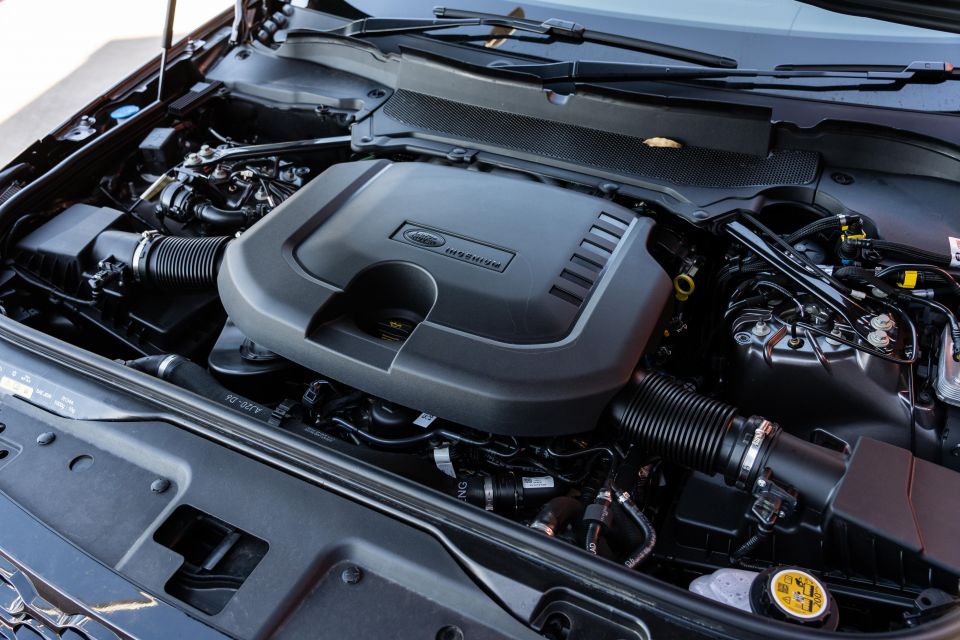
The 3.0-litre inline-six twin-turbo diesel engine produces 221kW of power and 650Nm of torque. It’s capable of going from 0-100km/h in a claimed 6.8 seconds, and flat out it has a top speed of 209km/h.
Fuel economy is claimed to be a surprisingly low 7.5L/100km, but that goes out the window with the fun you can have driving this great British off-roader.
A five-star ANCAP safety rating provides plenty of confidence for the occupants, as does the impressive 900mm wading depth.
Along with a benchmark braked towing capacity of 3500kg, the Disco is an impressive off-roader and towing workhorse, with a price tag not far away from the Toyota LandCruiser 300 Sahara ZX. In fact, the Disco is less expensive if you don’t add too many options.
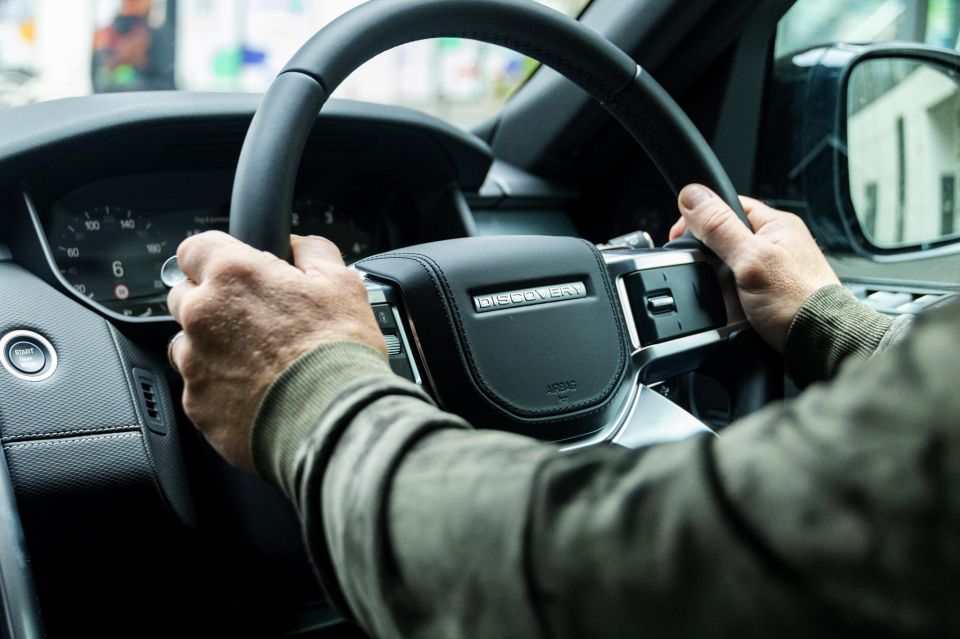
However, the dynamic roof load limit of just 80kg is a little disappointing. Typically, a vehicle’s roof load is rated as a dynamic figure, meaning it is an active limit when the vehicle is moving.
So don’t think the 80kg limit stops you from having a roof top tent with two adults sleeping in it. It just means you can’t drive with the people inside the tent.
To see how the Discovery compares with its rivals, use our comparison tool
ARB currently doesn’t have a bullbar to suit this model, but a number of other suppliers do and it’s worth shopping around as there are a variety of options ranging from simple nudge bars through to winch-compatible sports and full hoop bullbars.
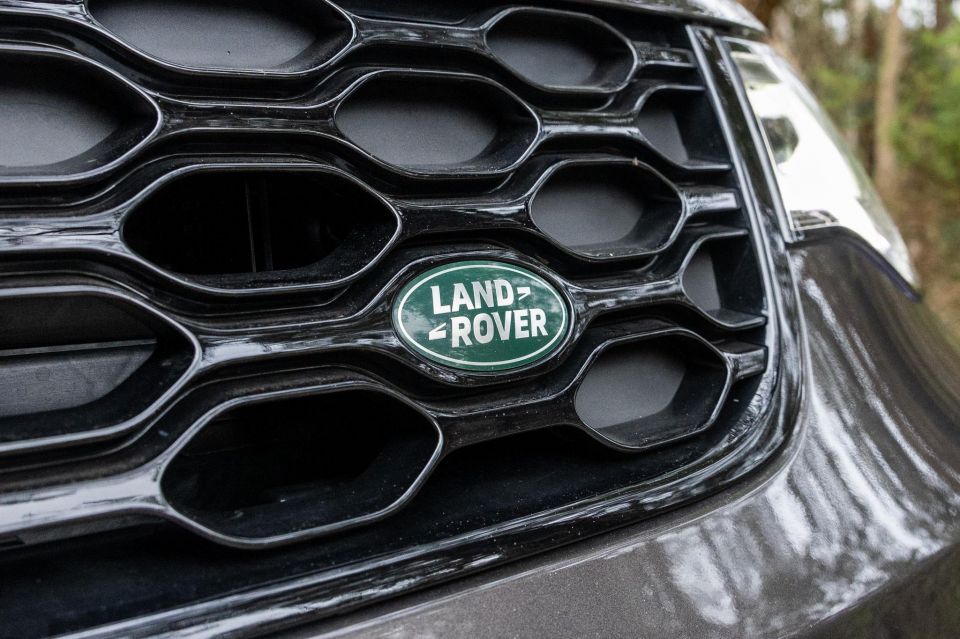
From the factory, the Disco is armed with a comfortable and height-adjustable air suspension system that can raise the vehicle by up to 75mm in normal circumstances.
This comes via the selection of two off-road modes that are respectively speed-limited. At 40mm of lift, the top speed is 80km/h, and at 75mm of lift the top speed is 50km/h.
Overall, there are four modes that, including the two off-road modes, incorporate normal mode (general road driving height) and access mode (a lowered mode for garages and underground car parks).
Across the various grades and model years, there is substantial confusion over these drive modes, as well as talk of an extended mode which only activates in response to the traction control when all four wheels are spinning and there is no detectable movement of the vehicle.
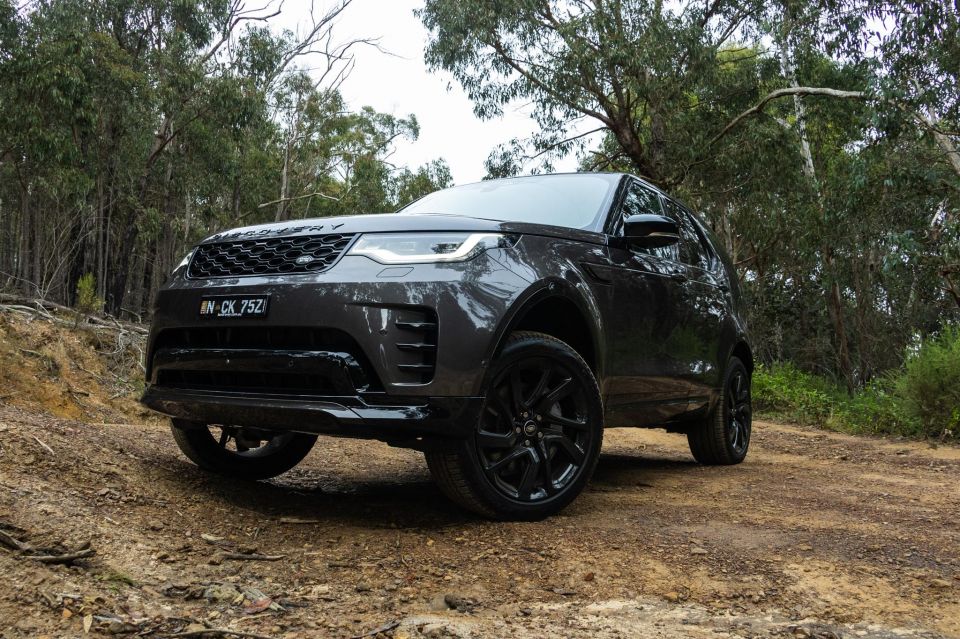
In this case, the suspension can over-extend in an attempt to get tyres to ground and provide some positive traction, when the vehicle is high centred or beached.
With all that said, there is one company, Johnson Rods, which offers a 1.0-1.5-inch suspension lift for the Disco 5. This is handy if you desire more clearance and room for larger tyres.
To see how the Discovery compares with its rivals, use our comparison tool
I never thought I’d say this about a poshed-up piece of pommy 4×4 crumpet, but I am actually a fan of the Land Rover Discovery.
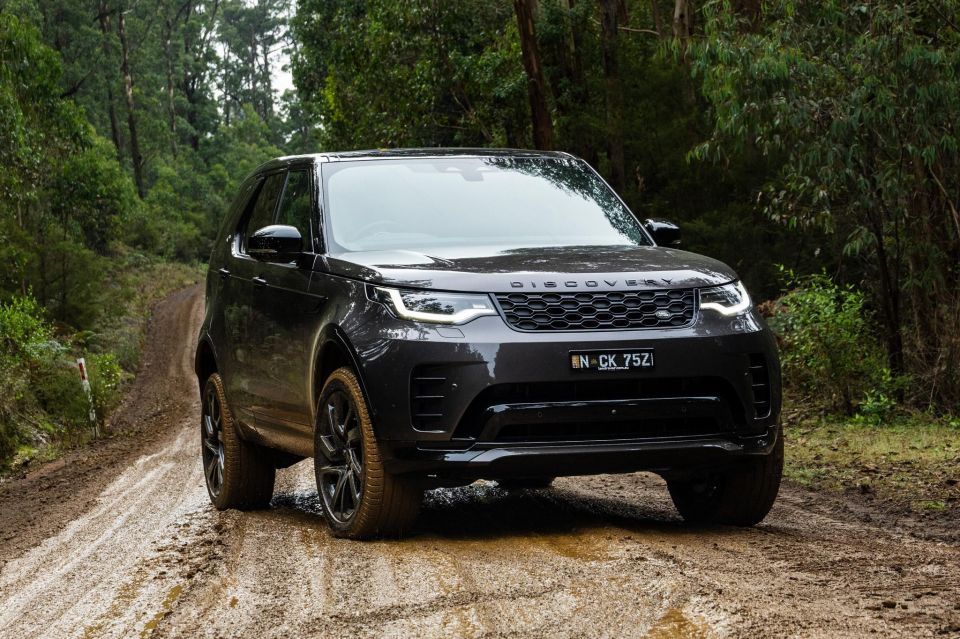
It is a pleasure to drive, super comfortable and surprisingly stable, plus it’s highly capable and even fun off-road.
The price tag may be a bit of a deal-breaker for some, but for those towing horses, tending the vineyards or servicing the feed lots on the way to high-end suburban private schools, this is a classy piece of automotive engineering that can actually back up its off-road cred with genuine traction and horsepower in the muddy stuff.
I am not sure how many of these cars will actually hit the bush for regular weekends away or overland treks, but the Discovery certainly has its place as a safe, comfortable and statement-making vehicle for hard-core off-roading or even a lap of Australia while towing.
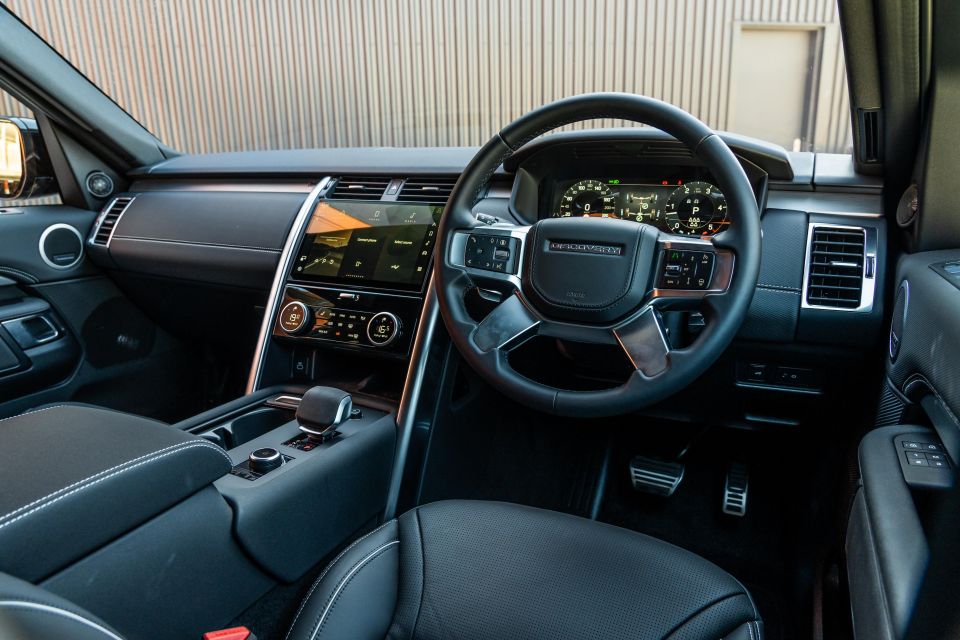
Where expert car reviews meet expert car buying – CarExpert gives you trusted advice, personalised service and real savings on your next new car.
If taken seriously, and considering the price tag that’s lower than the top-shelf LandCruiser 300 Series, the Disco could be a real winner for Land Rover. Indeed, it deserves to sell in much greater numbers than it does, probably in part because it’s been overshadowed by the newer and wider range of Defender variants.
I think it’s sad for enthusiasts that the current Disco doesn’t actually have a numerical suffix, even though the community has dubbed it the Disco 5.
It is even more interesting that a little research shows that the Disco 6 (as named by enthusiasts) will be launched in 2025, indicating that whether Land Rover supports it or not the numerical suffix will stick!
This shows a real passion for Land Rover products and validates the fact it’s a great alternative to Toyota’s biggest and most expensive SUV.
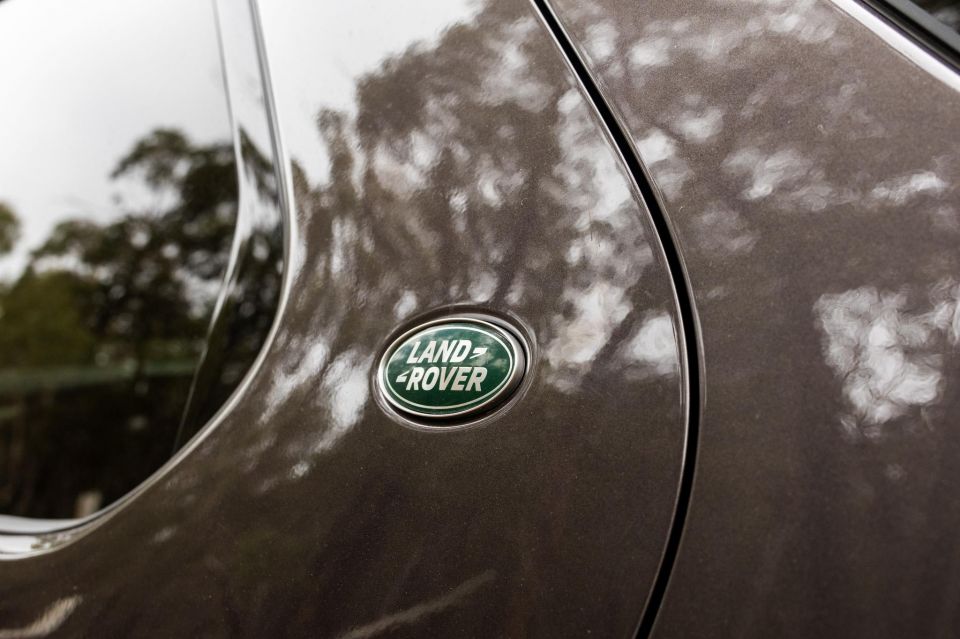
Interested in buying a Land Rover Discovery? Get in touch with one of CarExpert’s trusted dealers here
Click the images for the full gallery
Where expert car reviews meet expert car buying – CarExpert gives you trusted advice, personalised service and real savings on your next new car.


Damion Smy
7 Hours Ago
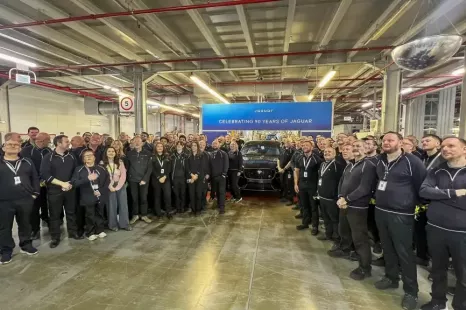

Damion Smy
10 Hours Ago
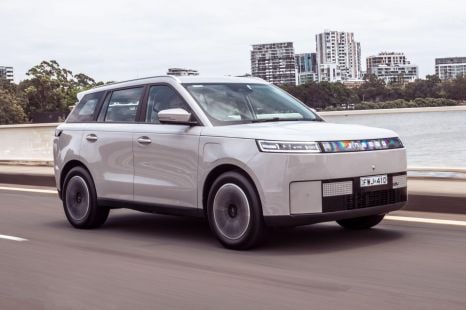

Josh Nevett
12 Hours Ago


Josh Nevett
12 Hours Ago
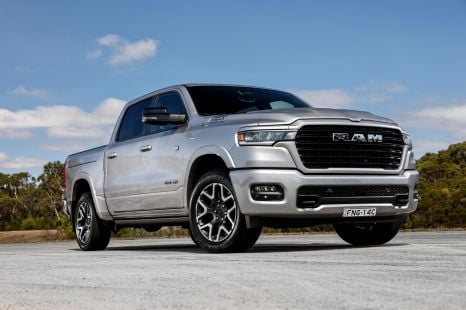

Damion Smy
13 Hours Ago
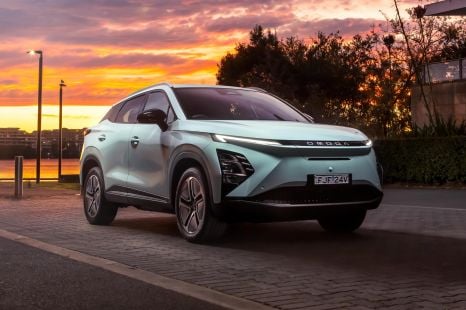

CarExpert.com.au
13 Hours Ago